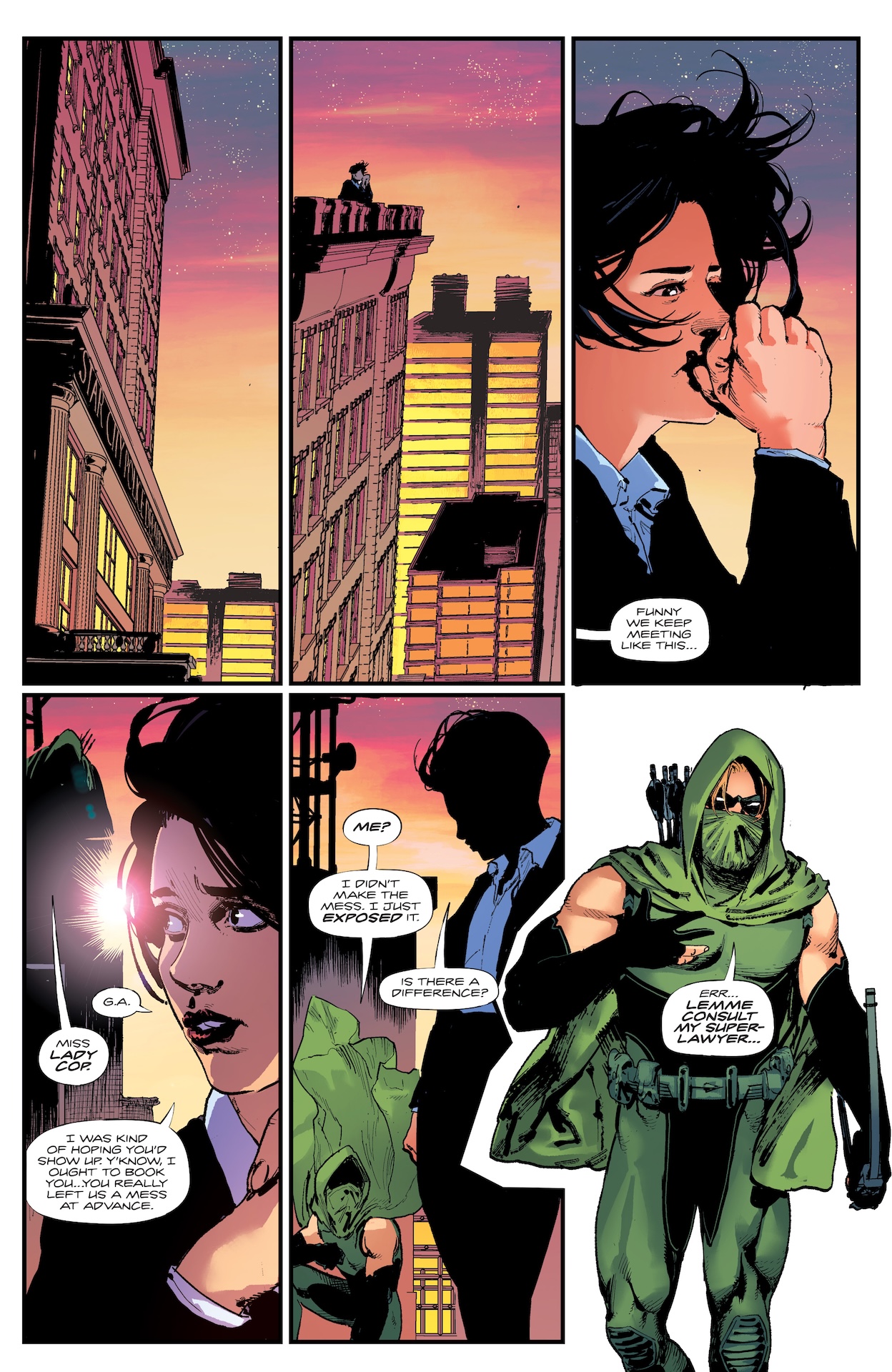 Lonesome Days, Savage Nights: The Manning Files #2
Lonesome Days, Savage Nights: The Manning Files #2
Written by Salvatore Simeone and Kenny PorterIllustrated by Szymon KudranskiLettered by Thomas MauerPublished by TKO StudiosPublication date: August 16, 2023
The gumshoe detectives of old were popular with audiences because they had a pretty reliable moral compass that kept them straight. Sure, they might bend a rule or two, but their end goal was never unclear. They were tireless seekers of truth, and they were going to find it even if the very systems they worked for fought them on it. Consider Kolchak: The Night Stalker, Eddie Valiant from Who Framed Roger Rabbit?, Mulder and Scully, or Mike Hammer from Kiss Me Deadly. Acolytes of truth the lot of them.
TKO Studios’ Lonesome Days, Savage Nights features such a character, a private eye called Stu Manning. He follows in the same footsteps as the inspectors mentioned above, driven by the same need to uncover the truth despite the pushback from all sides. What sets Stu apart, though, is his moral compass, or rather the complication of it. Stu is a werewolf, so his compass pulls double duty as it’s shared with the wolf that lives inside him. And this one likes to come out whenever the opportunity for violence arises.
Written by Salvatore Simeone and Kenny Porter and illustrated by Szymon Kudranski, Lonesome Days, Savage Nights: The Manning Files vol. 2 continues the saga of the werewolf private eye from Center City. The first book (which was co-written with Steve Niles) saw the character take down the Sala crime family after seeing his girlfriend become a civilian casualty during a hit aimed at a snitch. Book two centers on a corrupt corporate tech giant that’s buying out properties in a low-income area of the city for access to special resources that are of considerable value for their operation.

Simeone and Porter put in the work to portray the corporation’s behavior as emblematic of gentrification, but with a more sinister twist. We get to see the community respond to the landgrab and to the promises of better housing as everything turns into a tired scam of half measures that force people into becoming refugees in their own city.
The story is strong enough to stand on its own, but to really appreciate the state of Stu Manning’s character and that of his allies you really need to pick up volume one. The series focuses a lot of its energy on character development, and it certainly looks like it wants to play the long game. For instance, Stu and the wolf have a strained relationship based on self-control that’s constantly under threat of collapse. A lot of this is set up in book one along with how the ghost of his dead girlfriend helps him keep the monster at bay. Same goes for his detective partner and a rookie cop character, both of which wrestle with the risks of navigating Stu’s lupin condition in stakeouts.
These characters are so well put-together that jumping straight to volume two without reading volume one truly does the story a disservice. Unlike other private eye characters from other stories, Stu’s character doesn’t remain in the same headspace as he was in book one. Investigators like Kolchak and Sherlock Holmes, for instance, have distinct personalities that don’t stray too far away from them as cases come and go. They certainly get challenged to the point of bringing about questions on their world views, but the Kolchak from episode 1 is the same as the Kolchak from episode 7.
Simeone and Porter allow Stu’s connection with the wolf to evolve and be in a totally different place from one story arc to the next, and it’s rooted in unstable ground. It reminded me of Al Ewing and Joe Bennett’s Immortal Hulk in this regard. Bruce Banner’s relationship with The Hulk is rife with resentment and fear as to which personality deserves to be behind the wheel. Lonesome Days dives into this enough to make the story carry a more acute sense of danger as Stu’s internal battles with the wolf can come up at any moment and produce disastrous results for everyone involved, both good and bad.

Kudranksi captures this fractured duality well, sticking with a wolf design that resembles that of Marvel’s classic Werewolf by Night crossed with the iconic one from Universal Studios’ 1941 film The Wolf Man. Kudranski draws his werewolf like an agent of righteous violence, balancing terror with heroics to guarantee he doesn’t get confused as one of the bad guys. In this sense, the art succeeds in keeping the moral compass pointing in the right direction. It achieves the effect of framing the wolf as worthy of the gumshoe identity that graces his human counterpart.
In addition, Kudrasnki also imbues the story with the necessary darkness to keep the tone and atmosphere in line with that of a legitimate werewolf story. Wolf action sequences are gory but not excessive. Enough is left to the imagination that it gives the killings a truly terrifying turn. It’s as if Kudranksi wanted readers not to forget that werewolves are relentless murder machines that run on human blood regardless of how ethical their killing sprees may be.
Lonesome Days, Savage Nights Vol. 2 makes an excellent case for the importance of character development, on committing to narrative and emotional arcs from the very start. Its approach to the gumshoe detective tradition pays off considerably because of it. More impressive, in fact, is how well it adapts it to werewolf horror, never compromising its ideas in favor of one or the other. It stays the course and continues to bet on the howling private eye, a creature that we should all be glad is on our side.
Verdict: BUY







